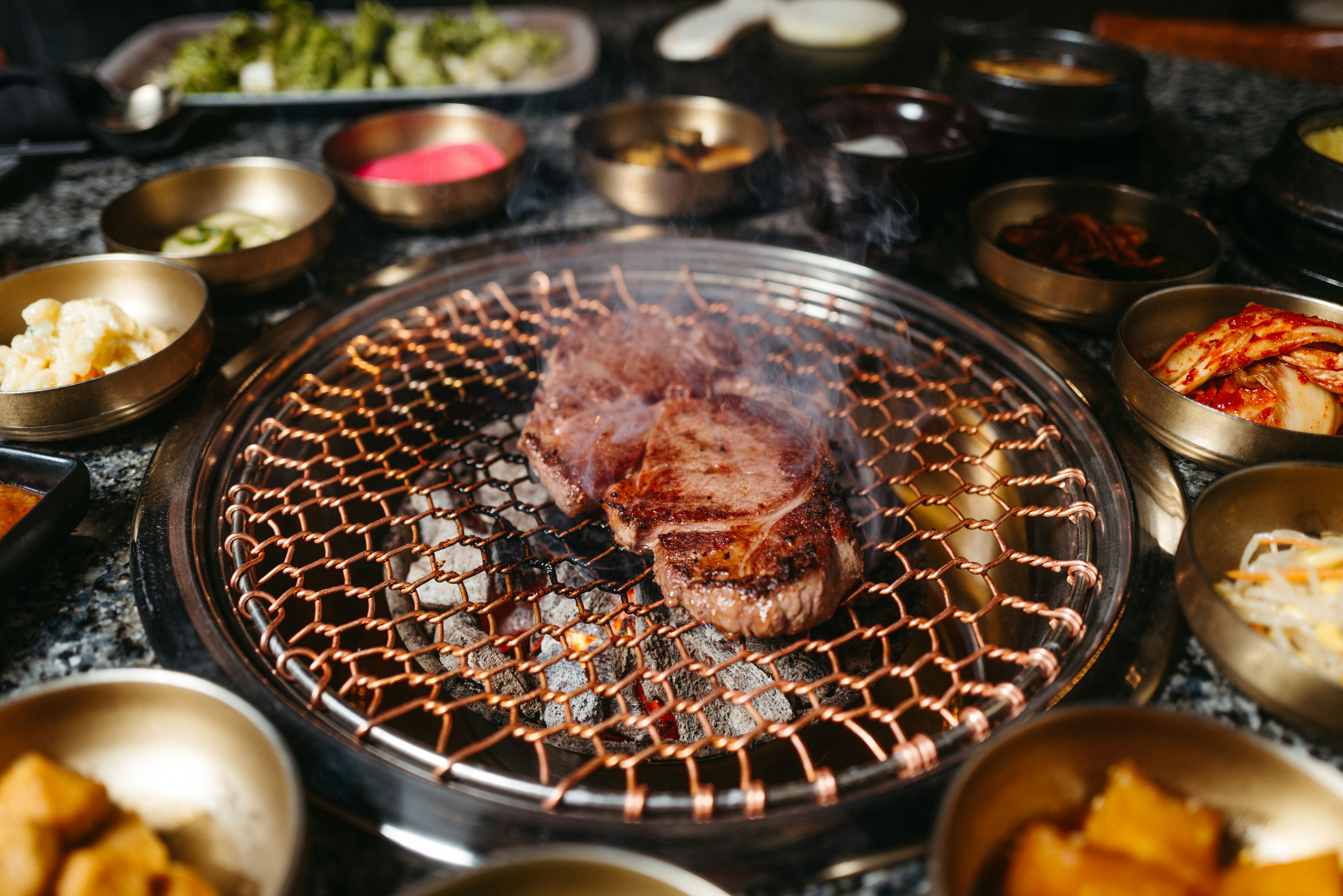Korean vs American Barbecue Health Comparison
By Najla Zaidi | 15 Jul, 2025
Korean BBQ is the healthier option due to its cooking style and the healthier side dishes that typically accompany it.
Since the dawn of mankind, man has been cooking meat over a flame in one form or another. To this day, barbecuing various meats is a staple and ritual all over the world. Just like our ancestors from 780,000 years ago, most people would agree nothing beats getting together with family and friends and enjoying meat cooked over a hot flame.
But is it healthy? Let’s do a comparison of the two most popular types of barbecues: Korean and American and see which one comes up on top.
Do keep in mind most medical professionals agree that consuming large quantities of barbecued meat is unhealthy.
“These aren’t healthy due to the type of proteins they are,” Dana Hunnes, senior dietitian at the Ronald Reagan UCLA Medical Center explains. “Animal proteins, and especially red meats, are possible carcinogens and tumor promoters. The way these meats are cooked can also contribute to their lack of healthiness,” she states. “When meats are grilled or barbecued over a flame, heterocyclic amines, which are carcinogenic, can form.”
With that in mind, first up is American barbecue. Barbecue for Americans generally means slow cooking the meat for several hours over indirect heat, which can break down tough cuts of meat but can also result in higher fat content. This is usually done on grills or smokers outdoors. There also isn’t just one style of American barbecue, there are several depending on the state you live in.
Memphis-style barbecue focuses on slow-cooked pork. An example of this barbecue style would be pork ribs with a paprika-based spice rub and a side of barbecue sauce. Like Memphis, the Carolinas also emphasize pork, and they’re famous for their vinegar and mustard-based sauces. Hawaiians also push pork, and they often serve their barbecue with sides of white rice and macaroni salad.
Texas has four prominent barbecue styles: East Texans marinate their meat in a sweet, tomato-based sauce; Central Texans grill their meat over indirect heat with salt and pepper; West Texans cook their meat over direct heat; and South Texans use thick, molasses-like sauces. Potato salad is also a popular side dish in Texas.
Kansas City barbecue is legendary for slathering their slabs of meat with a thick ketchup and molasses-based sauce and serve it with a side of French fries. Baked beans and coleslaw are also common side dishes here. Alabama barbecue is famous for its white sauce, which is made with tons of mayonnaise, vinegar and sometimes sugar, among other secret ingredients, which only the chef knows.
The slow cooking methods can result in meats retaining more fat, which increases the risk of high cholesterol. Sauces are often high in sugar and fat, contributing to higher calorie intake, while dry rubs may be lower in calories, they are high in salt and in some cases, sugar. The sides are also riddled with unhealthy ingredients.
Sides like potato salad and macaroni salad are harmful. “Potato salad isn’t really going to provide much in the way of healthfulness,” Hunnes explains. “It’s mayo-based and heavy in calories. It at least provides some potassium from the potatoes to counteract the high salt content from the meat, but not likely enough.”
Now let’s turn to Korean barbecue and look at the pros and cons.
Korean barbecue or gogi-gul, is the process of grilling meat over a charcoal or gas grill built right into a tabletop, thus rendering the weather completely irrelevant and popularizing Korean barbecue restaurants worldwide. Although Korean BBQ uses much of the same meat, including pork, beef and chicken, the meat is much smaller, thinner and is marinated rather than using a dry rub or being basted in sauce as it cooks. The meat is also grilled over high heat, which can allow excess fat to drip away, making it a leaner and healthier choice.
Korean BBQ sauce tends to be thinner and lighter due to its soy sauce base and typically errs on the spicier side. The marinade also has a distinctly sweet taste, incorporating ingredients like soy sauce, sugar, garlic, sesame and oil.
Like its American counterpart, side dishes and condiments are big supporting characters in Korean barbecue. Some of the side dishes (banchan) include rice, pickles, kimchi and just about every vegetable you can imagine. Unlike their American cousins, these side dishes provide vitamins, fiber and probiotics.
“Korean barbecue is probably going to be the healthiest in terms of sides, since it has kimchi, bean sprouts and pickled radishes,” Hunnes states. “These provide some fiber, are low in calories and provide healthfulness from the fact that some are pickled or fermented, which can help with probiotics and prebiotics in the gut.”
While both types of BBQ are delicious, Korean BBQ, with its emphasis on grilling, lean meats, and nutritious side dishes, seems to be the healthier option and clear winner.
While both types of BBQ are delicious, Korean BBQ, with its emphasis on grilling, lean meats, and nutritious side dishes, seems to be the healthier option and clear winner.

Korean barbecue is the better choice.
Articles
Asian American Success Stories
- The 130 Most Inspiring Asian Americans of All Time
- 12 Most Brilliant Asian Americans
- Greatest Asian American War Heroes
- Asian American Digital Pioneers
- New Asian American Imagemakers
- Asian American Innovators
- The 20 Most Inspiring Asian Sports Stars
- 5 Most Daring Asian Americans
- Surprising Superstars
- TV’s Hottest Asians
- 100 Greatest Asian American Entrepreneurs
- Asian American Wonder Women
- Greatest Asian American Rags-to-Riches Stories
- Notable Asian American Professionals

